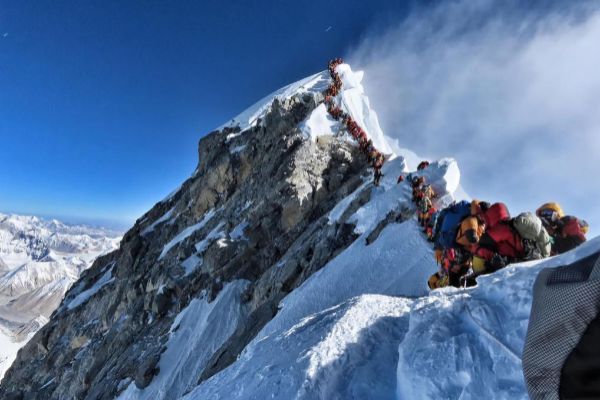The fastest way to reach the base camp of Mount Everest is to fly to one of the most dangerous airports in the world excavated in the mountain and walk for a week from there, a situation that the Nepalese government hopes to change with the first road to the roof of the world.
In two years, the Nepalese authorities expect this high-rise road to be ready, with panoramic views of rice paddies and the Himalayan mountain range on the sides, which will put an end to the current dependence on Tenzing-Hillary airport, in the northern city of Lukla.
The road will be built from the last section of the existing road until now in Khari Khola (at an altitude of 2,100 meters), to Chaurikharka, located about 3 kilometers from Lukla Airport (2,860 meters).
"We have proposed to conclude in this fiscal year, which ends in mid-July 2020, the work of opening tracks between Khari Khola and Chaurikharka," Ganesh Ghimire, administrative director of the Khumbu region, where the known "trekking" on Everest.
"It will be paved in 2021," he noted.
According to Ghimire, there will be two bus stations in Khari Khola and from there they will allow only the entry of "electric vehicles" as part of an initiative to turn the Everest region into an "emission-free" zone.
In addition, the official explained, they plan to build a cable car from Chaurikharka to Namche Bazaar (3,440 kilometers above sea level), where most of the well-known mountain guides or Sherpas live.
These ecological measures add to the recent decision to ban, since January 1, 2020, the use of single-use plastics in the Everest region.
The inhabitants of this region had been requesting this road from the Nepalese authorities for a long time, since it would avoid the dangerous and unpredictable airport.
Cancellations of flights due to bad weather are frequent, with the need sometimes for tourists to pay an extra $ 500 to return to Kathmandu by helicopter. In November 2011 alone, more than 3,000 travelers were forced to wait for a week.
In addition, they highlight, it would greatly reduce the costs of the products, since now the vast majority receive them by air, costing for example a gas bottle $ 150 (compared to $ 14 in Kathmandu) or $ 3 a cup of tea (in the capital 0.5 dollars).
The 25-minute flight between Kathmandu and Lukla costs an average of $ 180, as well as Bangkok.
"Due to the high cost, most tourists, and even Nepalese, think twice before traveling to the Everest region," Ghimire explained.
According to the official, 56,303 foreign hikers and mountaineers traveled to this region in 2018, much less Nepalese, and after the construction of the road the goal is to reach 500,000 annual visitors.
Ang Tashi Sherpa, owner of a restaurant in Lukla, acknowledged to Efe that the locals are excited about the road, since "it will facilitate the transport of supplies (and) will also help lower prices," by reducing the transportation cost of 1 , 50 dollars per kilogram by air, to 0.08 dollars by truck.
"Tourism will increase greatly once the new road is built," said Sherpa, who warned that the road should not go beyond Chaurikharka, as it would reduce the value of trekking and the visitor's stay in the region.
However, the reactions to the new road are not all positive, with some who fear that there will be an "excess of tourism" in the area that will lose some of its charm, as the former president of the Agency Association explained to Efe Trekking from Nepal, Sitaram Sapkota.
"Frequent footsteps can damage the unspoiled environment of the Everest region," said Sapkota, something that has already happened, he said, on the circuit of Mount Annapurna.
The Nepalese authorities are already planning a 100-kilometer motorcycle road that will reach Jiri, where the well-known route to the Everest base camp is taken by mountaineers Edmund Hillary and Tenzing Norgay Sherpa, and which took them on May 29, 1953, to conquer for the first time the roof of the world.
According to the criteria of The Trust Project
Know more- Everest

